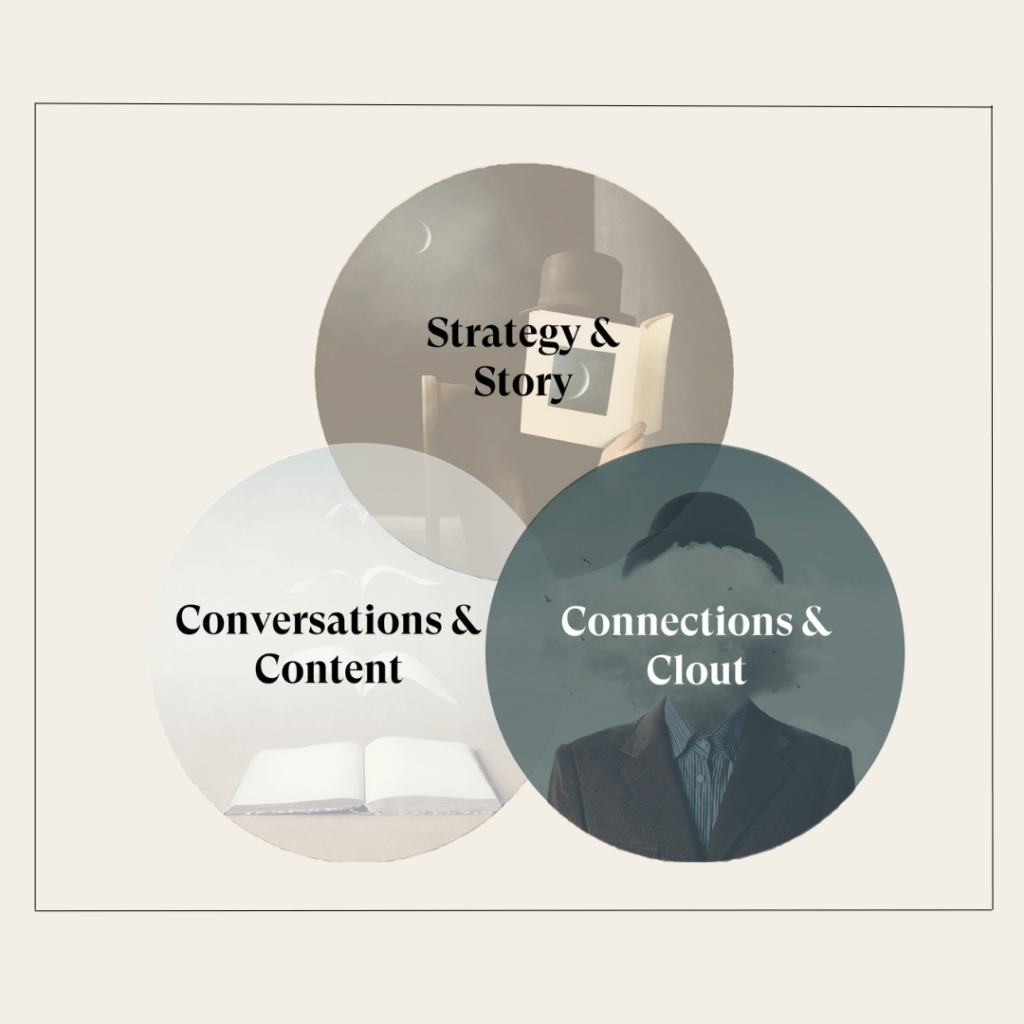The term “thought leader” gets thrown around a lot these days. But what does it really mean? How does thought leadership actually benefit people and organizations? Aren’t these people just subject matter experts, anyway? What do thought leaders even DO?
To get started, let’s look at some thought leader definitions from a founder and a couple CEOs:
- “Rather than chime in on every topic, they set the pace for the industry, and offer intelligent insights and informed opinions.” — Jake Dunlap, founder CEO of Skaled
- “A thought leader recognizes trends before they happen and applies that insight to achieve actual business results.” — Numaan Akram, founder and CEO of Rally
- “I believe thought leaders are not only on the cutting edge in terms of their ideas, but [they] also know how to inspire and influence others… Leaders can have great ideas, but true thought leaders have the courage to express their ideas and inspire others to implement them.” — Walt Rakowich, retired CEO of ProLogis
So thought leaders don’t just have good ideas. They think deeply. Inspire and cultivate conversations. Connect with other people in their field to lead toward a better way. And it’s through this leadership that they earn clout.
As noted thought leadership consultant Denise Brosseau said, “It’s not just about being known, it is about being known for making a difference.”
At Rootstock, we have our own definition of what a thought leader is and what they do:
Thought leaders are visionary thinkers with a unique perspective on present and future challenges and opportunities in their field.
They develop and articulate noteworthy and well-grounded arguments for how their field can respond to these challenges and opportunities to do better than the established best practices of today.
And they share their innovative insights and compelling questions with all stakeholders in order to start, nurture, and advance conversations that lead all concerned toward a better way.
So while thought leaders are typically subject matter experts (SMEs), not all SMEs are thought leaders. Let’s dive into the key differences that take someone from a SME to a thought leader and explore how to make that jump.
SME vs Thought Leader
Both roles are vital and can overlap, as some individuals might be both subject matter experts and thought leaders in their field. However, the primary distinctions of thought leaders lie in the depth versus breadth of their influence, and the way they contribute to their respective domains.
SUBJECT MATTER EXPERTS
According to Indeed, SMEs are “professionals who have advanced knowledge in a specific field. As an authority in a particular area or topic, they are uniquely qualified to provide guidance and strategy. SMEs are especially in high demand in workplaces requiring a technical approach to operations and culture.”
A SME in your organization, for example, is someone who knows the business deeply, has a distinct area of expertise, and is verging on being irreplaceable in accounting, sales, engineering, manufacturing, operations, HR, administration, software — or whatever department they specialize in.
While they’re invaluable to the organization, they are not thought leaders. Their focus is narrow though extensive: concentrating on a particular subject, process, or technology. Most people don’t know what these SMEs are thinking or even who they are. And in order to be recognized as an SME in their corner of the world, the concept of thought leadership is irrelevant.
THOUGHT LEADERS
A thought leader takes that knowledge and expertise and goes even further: willingly and generously sharing their insights with all key and relevant stakeholders to elevate their field, industry, or profession.
They:
- develop a unique perspective or POV (what we call a thought leadership position).
- become trusted sources who inspire and influence others with their innovative ideas.
- aren’t afraid to challenge the status quo, because they believe there’s a better way.
- are seen as visionary and forward-thinking, often setting trends and inspiring others.
- share their insights, predictions, and innovative ideas through various platforms such as speaking engagements, publications, social media, and industry events.
- connect the dots between different trends and ideas, offering a holistic perspective.
- are sought after for their strategic insights and ability to inspire change and innovation.
- are often in the public eye, leveraging their visibility to impact and lead discussions on important topics.
Practicing the above qualities is what turns a SME into a thought leader, and it is a commitment. It’s not something that happens overnight. It takes time, consistency, and confidence, but progressively this practice creates a dedicated group of fans and followers to help thought leaders replicate and scale their ideas into impactful change that moves everyone involved towards that better way.

To boil it down even further, let’s take a closer look at some other key differences between the two.
Scope of Influence:
- SMEs have a focused influence, providing detailed and technical knowledge in a specific area.
- Thought Leaders have a broader influence, shaping and guiding industry-wide discussions and trends. They are change makers.
Visibility:
- SMEs may not always seek the spotlight but are essential within their organizations or communities for their deep expertise.
- Thought Leaders often have a high public profile, engaging with a wide audience through various channels and platforms.
Role in Innovation:
- SMEs contribute to innovation through their specialized knowledge and problem-solving capabilities.
- Thought Leaders drive innovation by inspiring new ideas, fostering creativity, and challenging the status quo.
Communication:
- SMEs communicate detailed and technical information, often to a specialized audience.
- Thought Leaders communicate broader ideas and visions, often to a diverse and wide-ranging audience.

How to Become a Thought Leader
It’s important to understand that being a thought leader is a responsibility and a commitment that requires an investment of time, resources, and energy. Being a thought leader should be uncomfortable and can be scary. It also means you must be generous – with your ideas, thoughts, experience, and energy.
If you are willing to do the work to identify what you know, what you believe, and what your vision is, and you have the patience and fortitude to build momentum over time, then you can become a thought leader in your niche.
Remember, turning expertise into thought leadership takes time and consistency. Building trust in people doesn’t happen in a week, a month, or even a year!
This is what we do at Rootstock: help leaders and experts become thought leaders by crafting their strategy, and content ecosystem to accomplish their goals. And it all starts with building out their thought leadership position via our Radicle Report intensive. During this one-day workshop away from the noise and distraction of your everyday life, we work through several exercises to come to a clear articulation of your thought leadership position, helping you codify:
- This is what I know.
- This is what I believe.
- This is my vision.
- This is how I articulate it.
Once your thought leadership position is in place, we collaboratively build an integrated thought leadership strategy and content ecosystem specifically designed to best serve your stated marketing objectives and business goals, all while deepening and clarifying your thinking and all aimed at impacting these three key areas:

While it’s different for each leader and organization, that content ecosystem could include:
- Speaking engagements
- Writing and publishing a book
- Crafting blogs
- Contributing editorial to a media publication
- Social media content
- Whitepapers
- Case studies
- Podcasts
- Videos
- Awards
- Sponsoring or attending events
- A refreshed website
- Internal comms
- Corporate comms
- Leader-led comms
Who should become a thought leader?
Thought leadership clout is earned, not given. Those with ambitions to become a thought leader must be strategic, patient, committed, engaged, motivated, curious, bold, thoughtful, intentional, and collaborative.
Being influential, trusted, and inspiring with your expertise is what takes you from a SME to a thought leader. To become a SME, you can rely on just yourself, but to be a thought leader, you need the trust and interest of others.
It’s not easy and it’s not supposed to be. But for those who commit for the long haul, the rewards and ROI — for your personal brand and your company’s bottom line — are tremendous.
Ready to make the leap?
